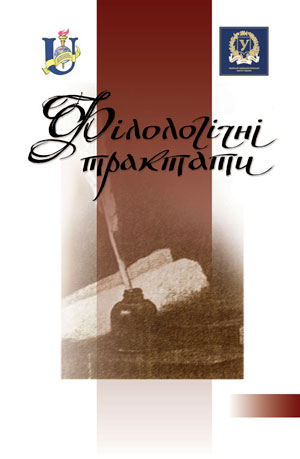Nikolova O., Kravchenko Y. The Specificity of the Cross-Dressing Motif in the Works by Lesia Ukrainka (in Comparison to the European Tradition)
DOI:
https://doi.org/10.21272/Ftrk.2019.11(3-4)-10Keywords:
Keywords: motif, travesty, transformation, literary tradition.Abstract
The objective of the article is to consider the travesty motif in the works by Lesia Ukrainka in comparison with the corresponding European tradition, to define the specificity of its transformation and functionality. The research analyzes typological convergences and differentiates travesty-related cliché plots inherent in the European culture in Lesia Ukrainka’s literary works, such as “Osinnia Kazka” (“The Autumn Fairy-Tale”), “Kaminnyi Hospodar” (“The Stone Host”), “Lisova Pisnia” (“The Forest Song”), and “Vila-Posestra” (“Vila Sister”). It has been proved that the abovementioned motif in the writer’s works is significative and serves to convey the author’s message while its interpretation enables deeper understanding of the ideas implied: cross-dressing points out the changes that take place in the characters’ inner world, their symbolic death (rejection of their own Self) or rebirth. The female cross-dressing is connected with self-sacrifice for the man’s sake and spiritualizes the heroine whereas the male one indicates weakness and “submissiveness”.













